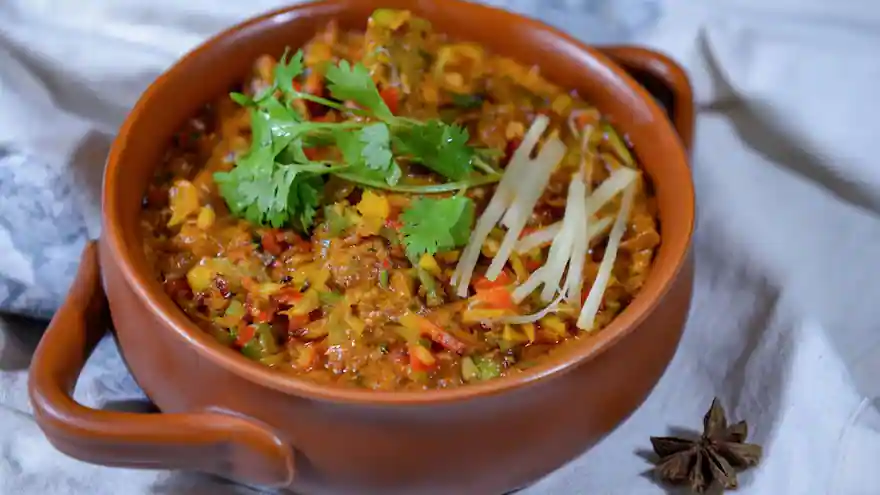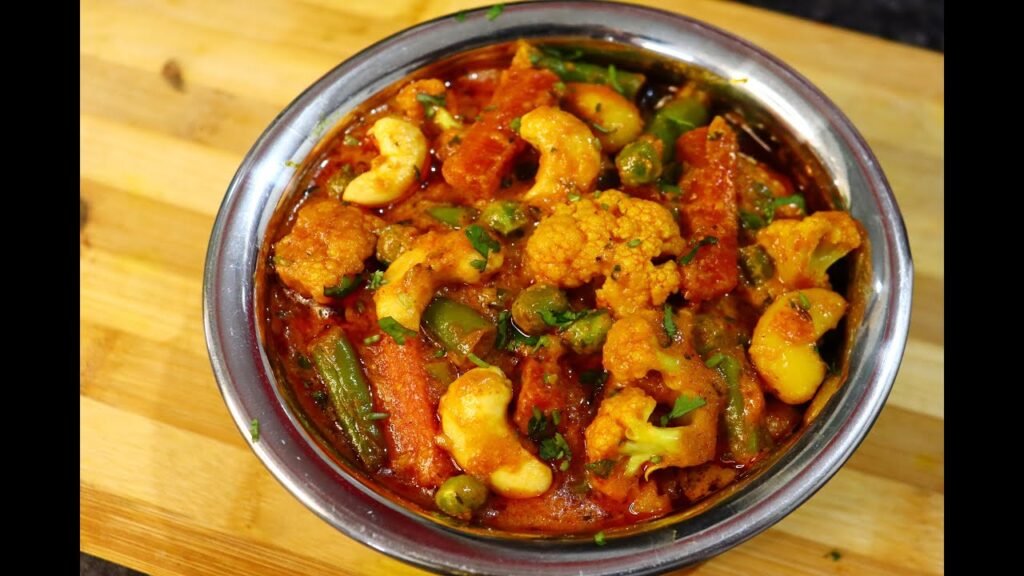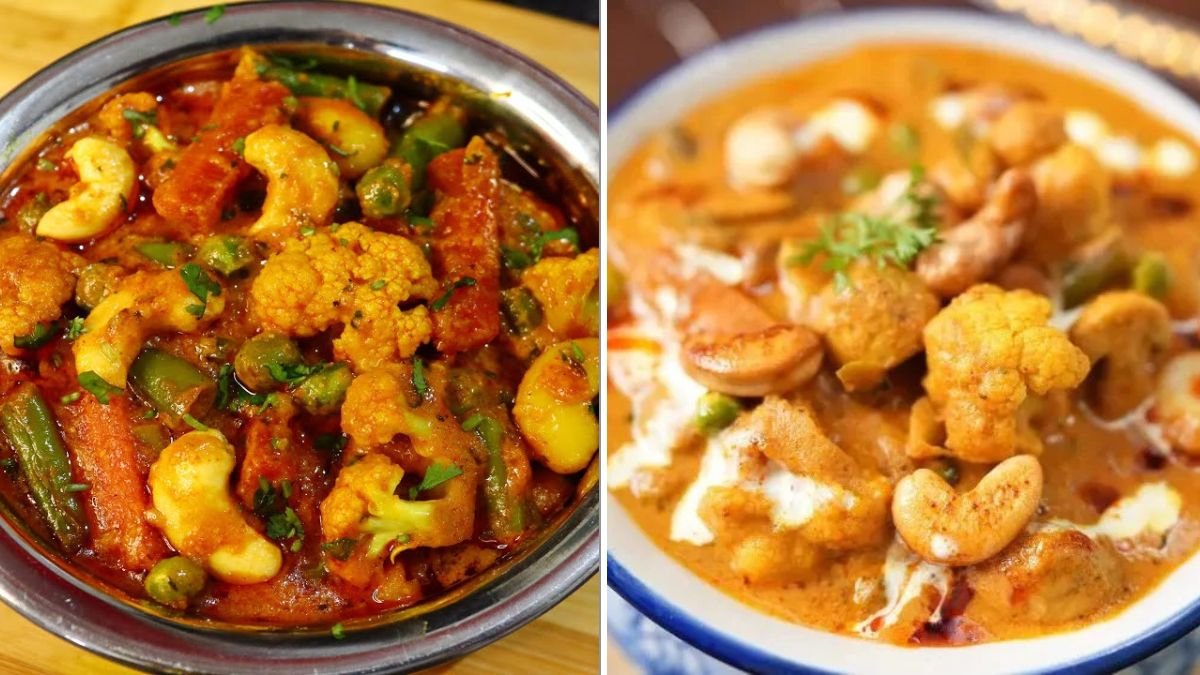There’s something irresistible about a hot, fragrant Vegetable Handi — that comforting medley of colorful vegetables simmered in a mildly spiced, creamy sauce. Traditionally served in a small clay pot (the “handi”), this North Indian classic brings together rustic charm and wholesome nutrition in one beautiful dish.
The best part? You don’t have to be a professional chef to make it. With the right ingredients and a little patience, you can create a restaurant-quality Vegetable Handi at home — light, nutritious, and bursting with flavor.
In this guide, we’ll walk you through 6 easy steps to make a healthy version of this crowd-pleasing dish that’s perfect for weeknight dinners, family get-togethers, or festive spreads.
What Is Vegetable Handi?
“Handi” refers to the traditional, wide-mouthed clay pot used in Indian cooking. The unique shape helps retain moisture and deepen the flavors as the curry cooks slowly over low heat.
Vegetable Handi combines assorted seasonal vegetables—like carrots, beans, peas, cauliflower, and bell peppers—simmered in a rich but balanced tomato-cashew gravy. The result? A dish that’s creamy yet light, spicy yet comforting, and absolutely packed with nutrients.
This recipe keeps it healthy by:
Using minimal oil
Replacing cream with low-fat yogurt or cashew paste
Keeping the spices aromatic, not overpowering
Loading it with fresh, colorful vegetables
Step 1: Gather Your Ingredients

Before you start, assemble everything you need. Having ingredients prepped will make the cooking process smooth and enjoyable.
Vegetables (2 cups total, chopped bite-size)
- ½ cup carrots
- ½ cup beans
- ½ cup cauliflower florets
- ½ cup green peas
- ½ cup capsicum (bell pepper, any color)
- ½ cup paneer cubes (optional for protein boost)
Base Gravy Ingredients
- 2 medium tomatoes, pureed
- 1 medium onion, finely chopped
- 1 green chili, slit (adjust to spice preference)
- 1 tbsp ginger-garlic paste
- 10–12 cashews, soaked in warm water (for creaminess)
- ½ cup low-fat yogurt or ¼ cup coconut milk
Spices
- 1 tsp cumin seeds
- ½ tsp turmeric powder
- 1 tsp red chili powder (adjust to taste)
- 1 tsp coriander powder
- ½ tsp garam masala
- 1 tsp kasuri methi (dried fenugreek leaves)
- Salt to taste
Other Ingredients
- 2 tbsp olive oil or ghee (for a richer flavor)
- Fresh coriander leaves for garnish
- ½ cup water or vegetable stock
Step 2: Parboil or Steam the Vegetables

The key to a good Vegetable Handi is tender, not mushy, vegetables. Each vegetable has its own cooking time, so parboiling helps them soften evenly without losing color or texture.
Method:
- Boil water in a deep pan with a pinch of salt.
- Add hard vegetables like carrots, beans, and cauliflower first. Cook for 3–4 minutes.
- Then add peas and capsicum for another minute.
- Drain immediately and rinse under cold water to stop cooking.
Pro Tip: Steaming the veggies instead of boiling helps preserve nutrients and bright colors.
Step 3: Prepare the Base Gravy
The gravy is the heart of your handi. We’ll make it flavorful yet light—rich without heavy cream.
Method:
- Heat 2 tablespoons of olive oil or ghee in a deep nonstick pan or handi.
- Add cumin seeds and let them sizzle until aromatic.
- Add chopped onions and sauté until golden brown.
- Stir in ginger-garlic paste and green chili, cooking until raw aroma disappears.
- Add tomato puree and cook for 5–7 minutes, stirring occasionally, until the oil begins to separate from the masala.
Pro Tip: This slow sautéing process (called bhunao) builds depth of flavor, just like restaurant-style curries.
Step 4: Add Cashew Paste and Yogurt

This is where the magic happens — the creamy, velvety texture without using heavy cream or butter.
Method:
- Blend the soaked cashews with 2 tablespoons of water into a smooth paste.
- Lower the heat and stir the cashew paste into the cooked masala.
- Add yogurt or coconut milk, whisking continuously so it doesn’t curdle.
- Mix well until the gravy becomes rich and slightly thick.
Pro Tip: Always add yogurt on low heat and stir constantly to maintain a smooth texture.
Step 5: Add Spices and Cook the Vegetables
Now comes the part where everything comes together beautifully.
Method:
- Add all the dry spices — turmeric, coriander powder, red chili powder, and salt. Stir well.
- Add ½ cup of water or vegetable stock to adjust consistency.
- Bring the gravy to a gentle boil, then add the steamed vegetables and paneer.
- Mix well so that the veggies are coated in the flavorful sauce.
- Cover and cook on low flame for 5–6 minutes, allowing the vegetables to absorb the spices.
Pro Tip: Avoid overcooking. The vegetables should remain slightly firm and retain their natural bite.
At this stage, your kitchen will fill with the mouthwatering aroma of roasted spices, creamy cashew, and garden-fresh vegetables — a true sensory delight.
Step 6: Finish With Garnish and Serve

Final Touch:
- Sprinkle garam masala and kasuri methi on top.
- Gently mix and turn off the flame.
- Garnish with fresh coriander leaves.
If you’re serving it for guests or a special dinner, transfer the curry to a small clay handi for that authentic look and earthy aroma.
Pro Tip: Warm the handi before pouring in the curry — it enhances flavor and presentation.
How To Serve Vegetable Handi
Healthy Vegetable Handi pairs beautifully with:
- Whole wheat roti or naan for a wholesome meal.
- Jeera rice or brown rice for a balanced, fiber-rich option.
- Millet or quinoa if you prefer a gluten-free, nutrient-packed side.
For a light meal, you can even enjoy it with multigrain flatbreads or as a curry bowl with cooked grains and salad on the side.
Nutritional Benefits

This Vegetable Handi is as nourishing as it is delicious. Here’s why:
High in Fiber and Antioxidants
The mix of vegetables provides a wide range of vitamins and minerals — especially vitamin C, beta-carotene, and potassium.
Low in Saturated Fat
Replacing cream with yogurt or cashew paste cuts down unhealthy fats while keeping the curry creamy and satisfying.
Rich in Plant Protein
Paneer (optional), peas, and beans add plant-based protein, making this a complete vegetarian dish.
Immune-Boosting Spices
Ginger, garlic, turmeric, and cumin not only add flavor but also offer anti-inflammatory and digestive benefits.
Tips For The Perfect Healthy Vegetable Handi
- Use fresh vegetables: Frozen ones work in a pinch, but fresh produce enhances taste and texture.
- Adjust spice levels to your liking—mild for kids, medium for family dinners, and fiery for spice lovers.
- Don’t rush the sautéing (bhunao): This step develops deep, authentic flavor.
- Avoid excess oil: The trick is to sauté slowly, not add more oil.
- Add a squeeze of lemon juice just before serving to brighten up the flavors.
Variations to Try
- Vegan Version: Replace yogurt with coconut milk and paneer with tofu.
- Protein Boost: Add boiled chickpeas or lentils for extra nutrition.
- Low-Carb Option: Skip peas and carrots, add zucchini and broccoli instead.
Each variation gives the dish a unique spin without compromising its traditional essence.
In Conclusion
A healthy Vegetable Handi is more than just a curry — it’s a celebration of India’s love for spices and vegetables. It’s vibrant, wholesome, and deeply satisfying.
By following these 6 easy steps, you can create a version that’s lighter, heart-healthy, and packed with real flavor. Serve it hot, scoop it with warm rotis, and watch it disappear from the table in minutes.
Cooking it in your kitchen not only fills your home with irresistible aromas but also reminds you how simple ingredients — a few vegetables, some spices, and care — can create magic in a pot.
So grab your handi, turn on the stove, and let your culinary journey begin — one healthy, delicious bite at a time.





